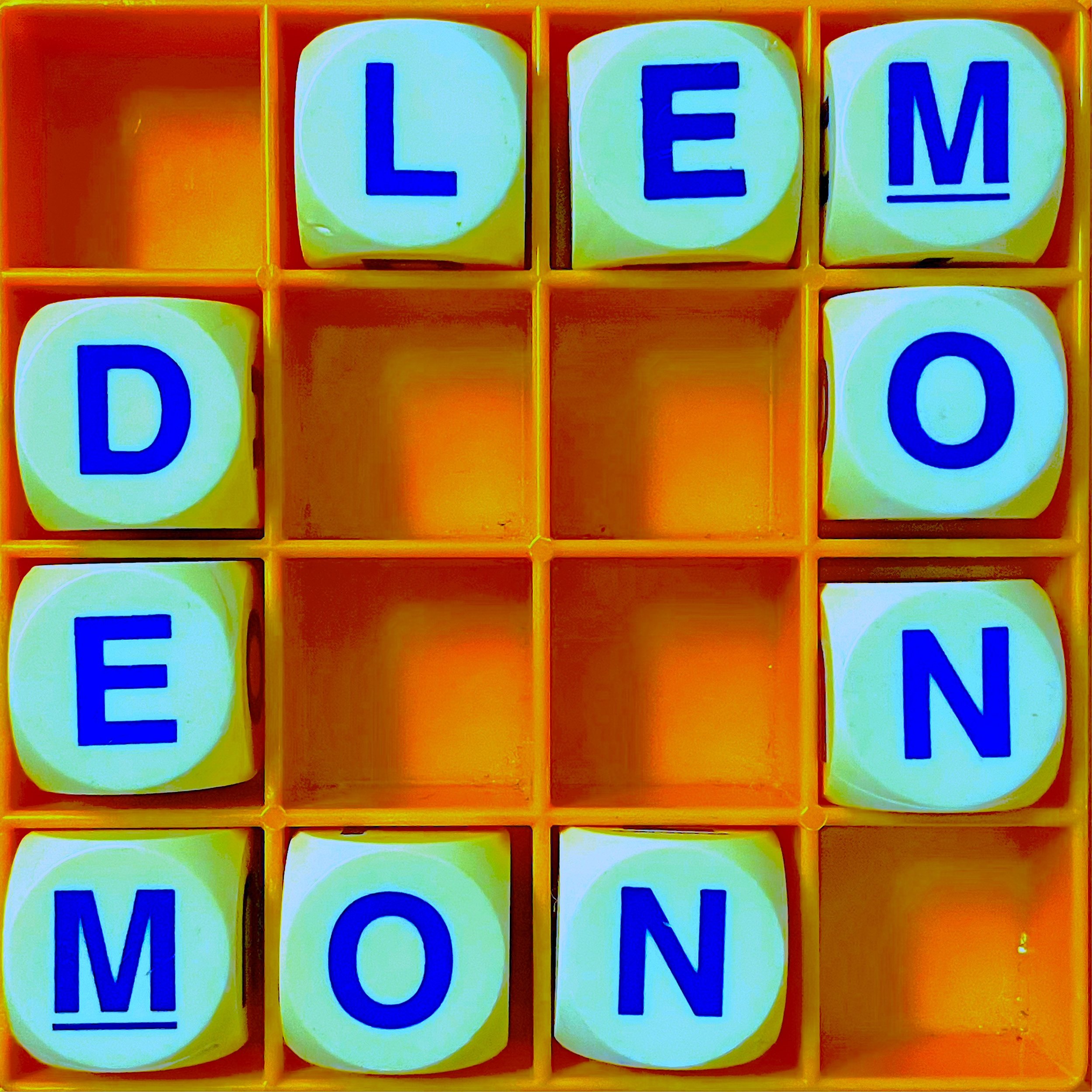This is the Allusionist, in which I, Helen Zaltzman, have been stashing away special Allusiobits all year, when the people who appeared on the show said interesting things that I couldn’t fit into their episode because there wasn’t room or it was not about language - waiting, just waiting, for this, the annual Bonus episode! This year we’ve got something called the ‘universal blank’, which actually does not refer to my emotions; we’ve got tricorn hats, poets with migraines, and why Boston cream pie isn’t a pie. And so much more.
Read moreAllusionist 193 Word Play part 3: Lemon Demon transcript
AJ JACOBS: Anagrams played a part in a trial, sort of a witch trial in the 1600s in the UK. And it was a woman who was put on trial for claiming that she was a prophet. Part of her proof was that if you rearrange the letters in her name - her name was Eleanor Davies - if you rearrange it, then it says, ‘Reveal, O Daniel’, as in the prophet Daniel. I don't believe that that was proof she was a prophet. They came down on her hard in the trial, so they said, “If you rearrange” - her married name was Dame Eleanor Davies - “and you rearrange those letters, it spells ‘Never So Mad A Lady;.” So like, “she's so crazy.” So that was how she was convicted. And by the way, that was when anagrams were easier, because there were so many spellings.
Read moreAllusionist 154 Objectivity transcript
HZ: When in your journalism career did the problems of objectivity become evident to you?
LEWIS RAVEN WALLACE: Probably like the first day.
Allusionist 94. Harsh Realm - transcript
MEGAN JASPER: I was the lucky recipient of a telephone call from the New York Times in the early 90s when they were writing a huge piece on Seattle, and they wanted to focus on the grunge lexicon. They wanted terms and phrases and words that we all used in the music scene; words and phrases that you would only know if you are part of the Seattle music scene.
HZ: On 15 November 1992, the New York Times printed an article entitled ‘Grunge - A Success Story’, about how grunge had become the latest big thing - ‘from subculture to mass culture’, as the article put it. In the preceding couple of years, the Seattle music scene had been co-opted by the mainstream, and by this point, record labels were putting stickers on album covers saying ‘Seattle’; just a couple of weeks before the NYT article, Marc Jacobs caused a stir in the fashion industry when he showed his grunge collection for Perry Ellis, after which he both won an award and was fired; Vogue printed a ‘Grunge & Glory’ fashion spread; and Kurt Cobain was photographed wearing a T-shirt printed with ‘grunge is dead’, in case you were wondering whether everyone was pleased with all these developments. And chasing the zeitgeist before it dipped below the horizon, there was the New York Times.
“When did grunge become grunge?’ the first paragraph went. “How did a five-letter word meaning dirt, filth, trash become synonymous with a musical genre, a fashion statement, a pop phenomenon?”
Immediately, you notice an error: ‘grunge’ is a six-letter word, not a five-letter word. But that’s just your warm-up error; don’t peak too early.
Read on, and there’s a sidebar entitled “Lexicon of Grunge: Breaking the Code”, “coming soon to a high school or mall near you”. And there followed a list of grunge slang terms.
bloated, big bag of bloatation – drunk
bound-and-hagged – staying home on Friday or Saturday night
harsh realm – bummer
plats – platform shoes
score – great
Not familiar with any of these terms? No. Nor was anybody.
MEGAN JASPER: What they didn't realize is that no such language really existed. And so I decided to have a little bit of fun with it.
Read more



